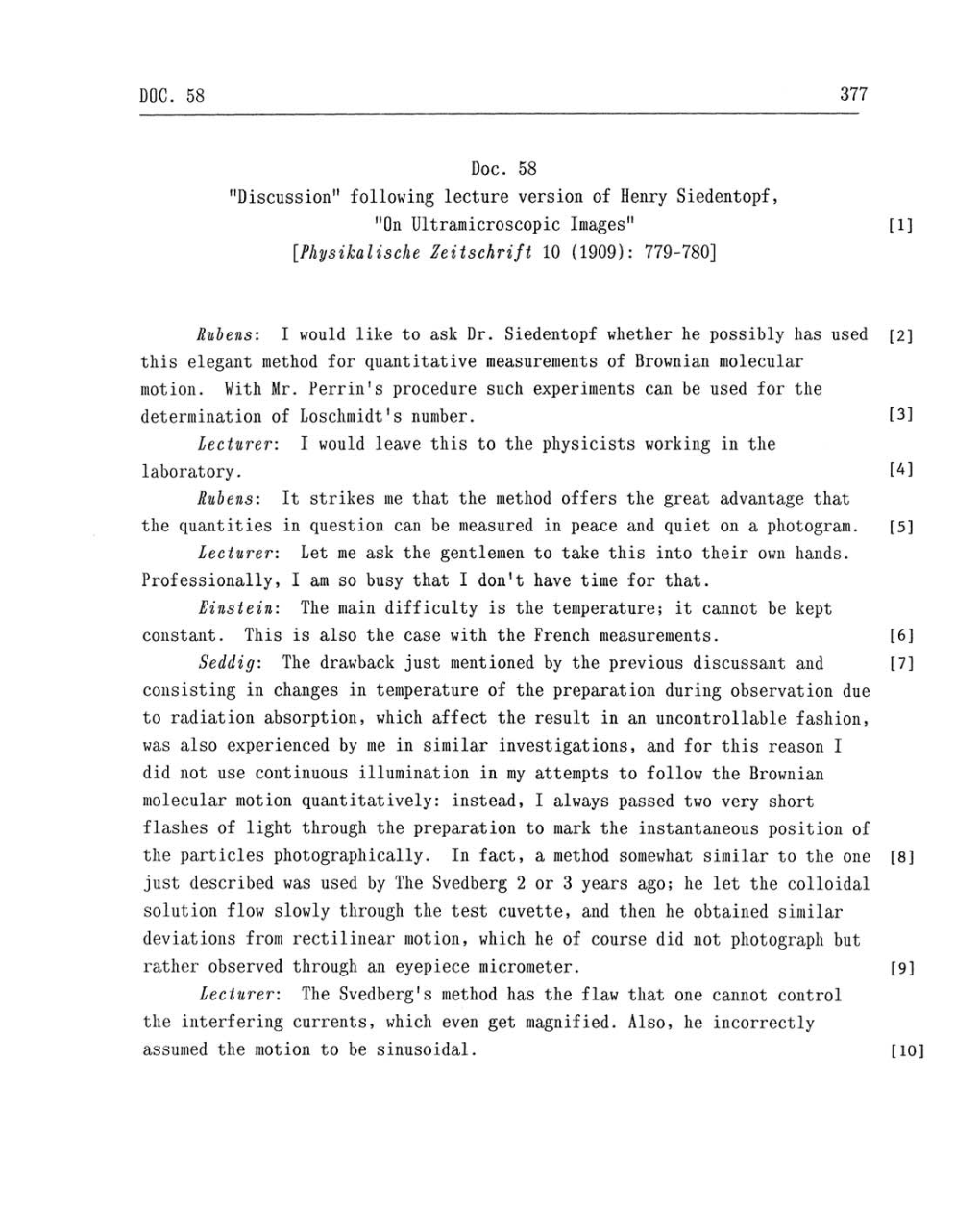DOC.
58
377
Doc. 58
"Discussion"
following
lecture version
of
Henry
Siedentopf,
"On
Ultramicroscopic
Images"
[Physikalische
Zeitschrift
10
(1909):
779-780]
[1]
Rubens:
I
would
like
to
ask Dr.
Siedentopf
whether he possibly has used
[2]
this
elegant
method
for
quantitative
measurements
of Brownian
molecular
motion.
With
Mr.
Perrin's
procedure
such
experiments
can
be used
for the
determination of
Loschmidt's
number.
Lecturer: I
would
leave this
to
the physicists
working
in
the
laboratory.
Rubens:
It strikes
me
that the method
offers
the great
advantage
that
the quantities in
question
can
be measured in
peace
and quiet
on
a
photogram.
[5]
Lecturer:
Let
me
ask
the
gentlemen
to
take this into their
own
hands.
Professionally, I
am so
busy
that I don't
have
time for that.
Einstein:
The main
difficulty
is the
temperature;
it
cannot be
kept
constant.
This
is
also
the
case
with the
French measurements.
[6]
Seddig: The
drawback
just
mentioned
by
the
previous
discussant
and
[7]
consisting
in
changes
in
temperature
of the
preparation
during
observation
due
to
radiation
absorption, which
affect the result
in
an
uncontrollable
fashion,
was
also
experienced
by me
in
similar
investigations,
and
for this
reason
I
did
not
use
continuous
illumination
in
my
attempts to
follow the
Brownian
molecular
motion
quantitatively: instead,
I
always
passed two
very
short
flashes
of
light
through
the
preparation
to mark
the instantaneous
position
of
the
particles
photographically.
In fact,
a
method
somewhat
similar
to
the
one
[8]
just described
was
used
by
The
Svedberg 2
or
3
years
ago;
he
let the colloidal
solution
flow slowly
through
the
test cuvette, and
then
he
obtained similar
deviations
from
rectilinear
motion,
which
he
of
course
did
not
photograph
but
rather observed
through
an
eyepiece
micrometer.
[9]
Lecturer:
The
Svedberg's
method has
the flaw that
one
cannot
control
the interfering
currents, which
even
get magnified.
Also,
he
incorrectly
assumed
the
motion
to be
sinusoidal.
[10]
[3]
[4]
